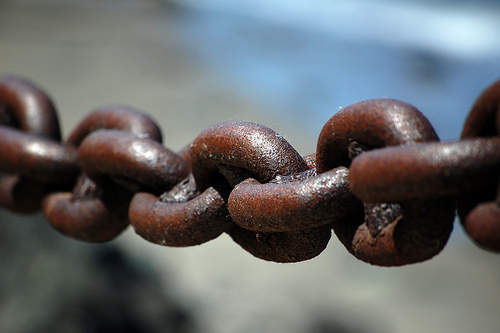I put hyperlinks in all the resumes I create.
Hyperlinks, for those who may not know, are live links to a website, embedded within a Word or PDF document. When someone clicks on the hyperlink, they will be taken to that website via their browser. If their browser isn’t open, clicking the hyperlink will open it automatically.
Hyperlinks typically look like this – blue font color and underlined.
Adding hyperlinks to your resume does two important things:
- Demonstrates visually that you are technology savvy and up-to-date in your skills. Older workers and people returning to the workforce after a break especially need to do this!
- Lends credibility to your claims. Subliminally, it is confidence-building for an employer to see that you are pointing them right to your employers’ and schools’ websites. And a hyperlink makes it easy for employers to click through right from your resume, thereby saving them time – always a good thing!
Here are the easiest places to add hyperlinks:
- Your email address up at the top of your resume. All you have to do is hit “enter” or the space bar after you type your email address and Word will automatically make it a hyperlink.
- A link to your LinkedIn profile included in your contact information.*
- How to do this: Type “LinkedIn Profile” on top of your resume under your telephone number. Then go to your LinkedIn profile. Go to “Edit Profile” and copy the url for your Linkedn Profile. Return to the resume document. Highlight the phrase “LinkedIn Profile.” Then click “insert” in the Word menu, click “hyperlink” and when the new window opens, type “Control” “V” and the url address will appear on the data line. Then click “save” and you’re done.
- Names of companies for which you’ve worked. For places that are still operating, send people either to the Home or About pages. If there is a page for the ivision you worked for, send people there. If your name is still mentioned anywhere, send people to that page. (You’ll have to keep tabs on that link, however, because your name could disappear at any time.) If a place is no longer operating, you can make a hyperlink to online mentions of the company: in a news story, on Wikipedia, or in work product you have online that mentions the company.
- College or university you attended. Again, send people to the Home or About pages for either the main entity or the school or department in which you studied.
- Client names. If you were a consultant, in advertising, management services or any of the thousands of businesses that serve other businesses, put links to some of the most important client companies. If you can send readers to a site that features your work, great. Most times you’ll send folks to the Home or About page.
IMPORTANT NOTE:
While it may seem to make your resume format a little inconsistent, that is less important than the visual cue that the blue and underlining give to readers. Everyone knows that a blue, underlined phrase means “hyperlink” and they will try to click on it. If you don’t give that visual cue, readers won’t know you have a hyperlink and you will have defeated your purpose.Resist the urge to eliminate either the blue font color or the underline.
Make sure it is a working link, by clicking on it yourself in both the Word and PDF versions.
*If you find your contact information getting too long, eliminate your street address. In this day and age, you don’t need to limit yourself to a location, nor do you want to divulge your address for privacy reasons.
http://www.blogdash.com/full_profile/?claim_code=ed31f859cbc6c80412d99cdac36e879f




its is very helpfull
thank you!
Superb blog! Do you have any tips and hints for aspiring writers? I’m hoping to start my own website soon but I’m a little lost on everything. Would you advise starting with a free platform like WordPress or go for a paid option? There are so many options out there that I’m totally confused .. Any ideas? Thanks!
Hi, I’ve helped a number of clients begin their own websites. We normally choose an easy-to-use platform, usually WordPress. The reality of doing any website is that it is never completely free. Every blog must be hosted somewhere, which costs money – at least $5 USD a month and generally more. If you use a spam-blocking software like Akismet, that costs $5 a month, too. If you can’t figure out how to use WordPress by yourself, you’ll need to pay someone to help you. Often people pay someone to write their website copy for them, working with them to figure out what they want to say. So there is no real free platform. Check out this blog post for guidelines on what a website really costs: http://www.websearchsocial.com/how-much-should-a-website-cost-the-older-and-wiser-edition/. Good luck!
If anyone can tell me how to make hyperlinks in a pdf, that wold be great! Even when using Professional Acrobat, conversions disappear and one has to recreate them, with ugly results!
Hi Ruth,
ah, the PDF hyperlink frustration! I found it works when I use Microsoft Word 2013 and “save as” PDF. The hyperlinks stay live. It’s the only way I’ve found that really works.
Good luck! Julie